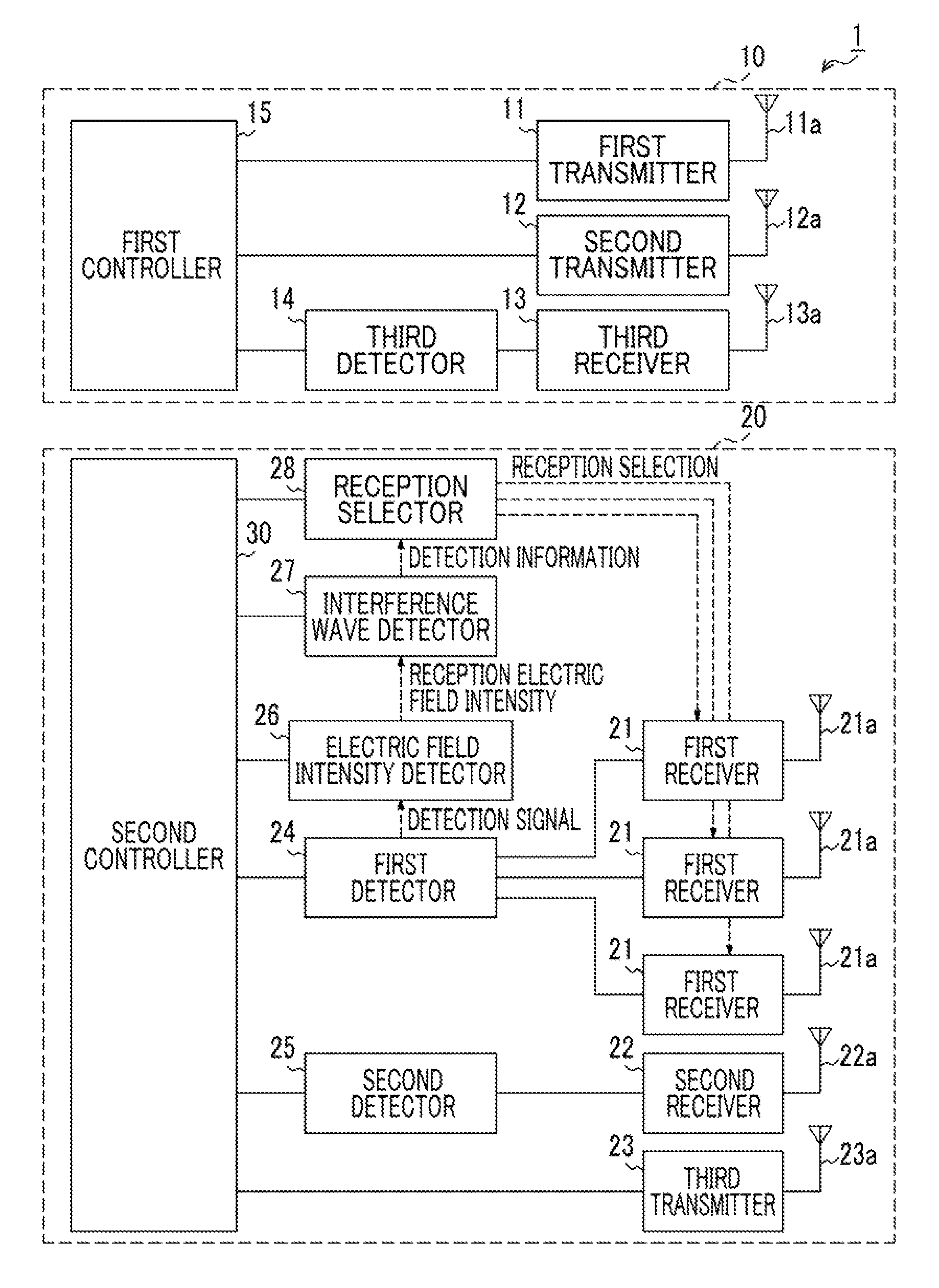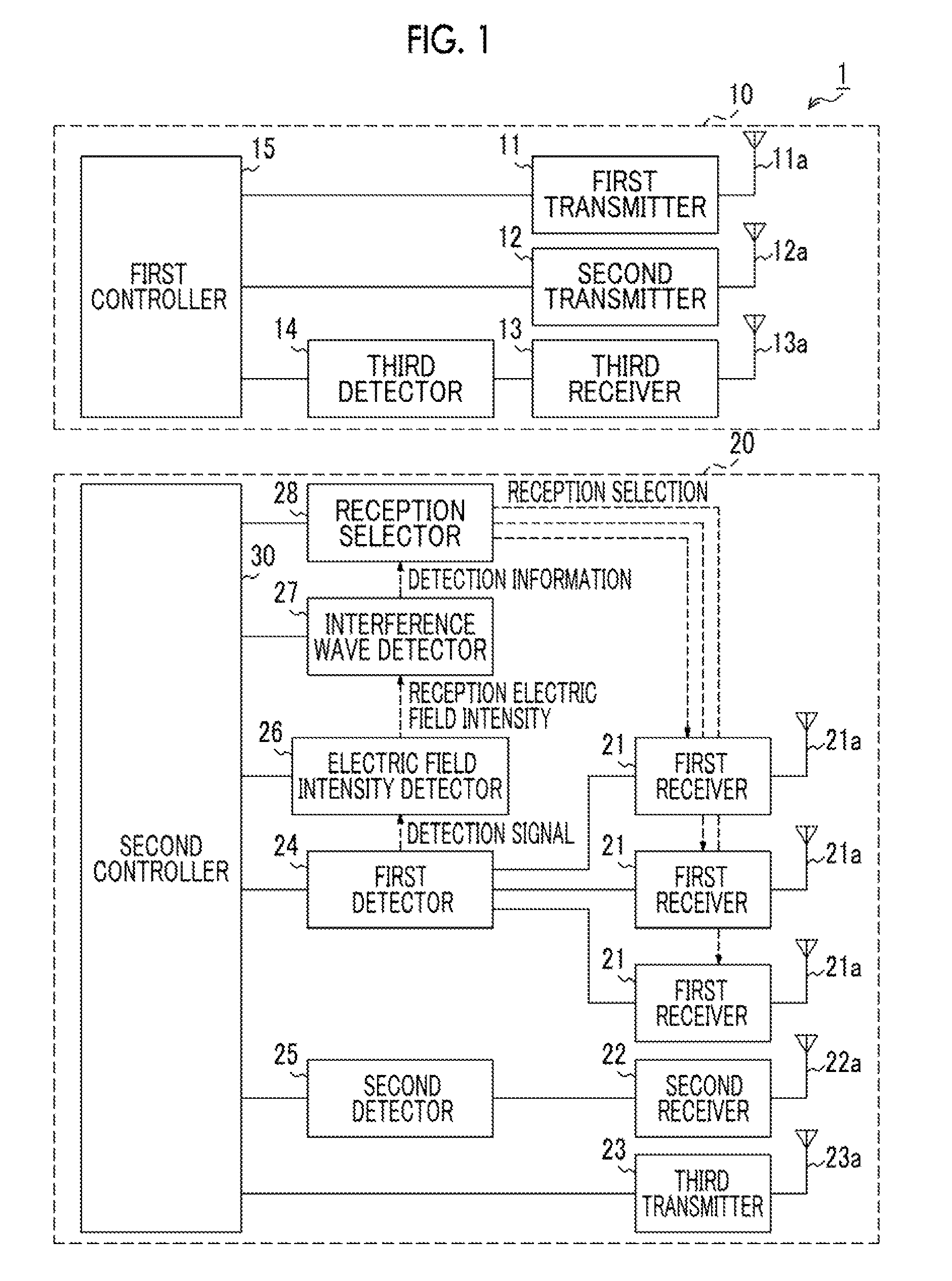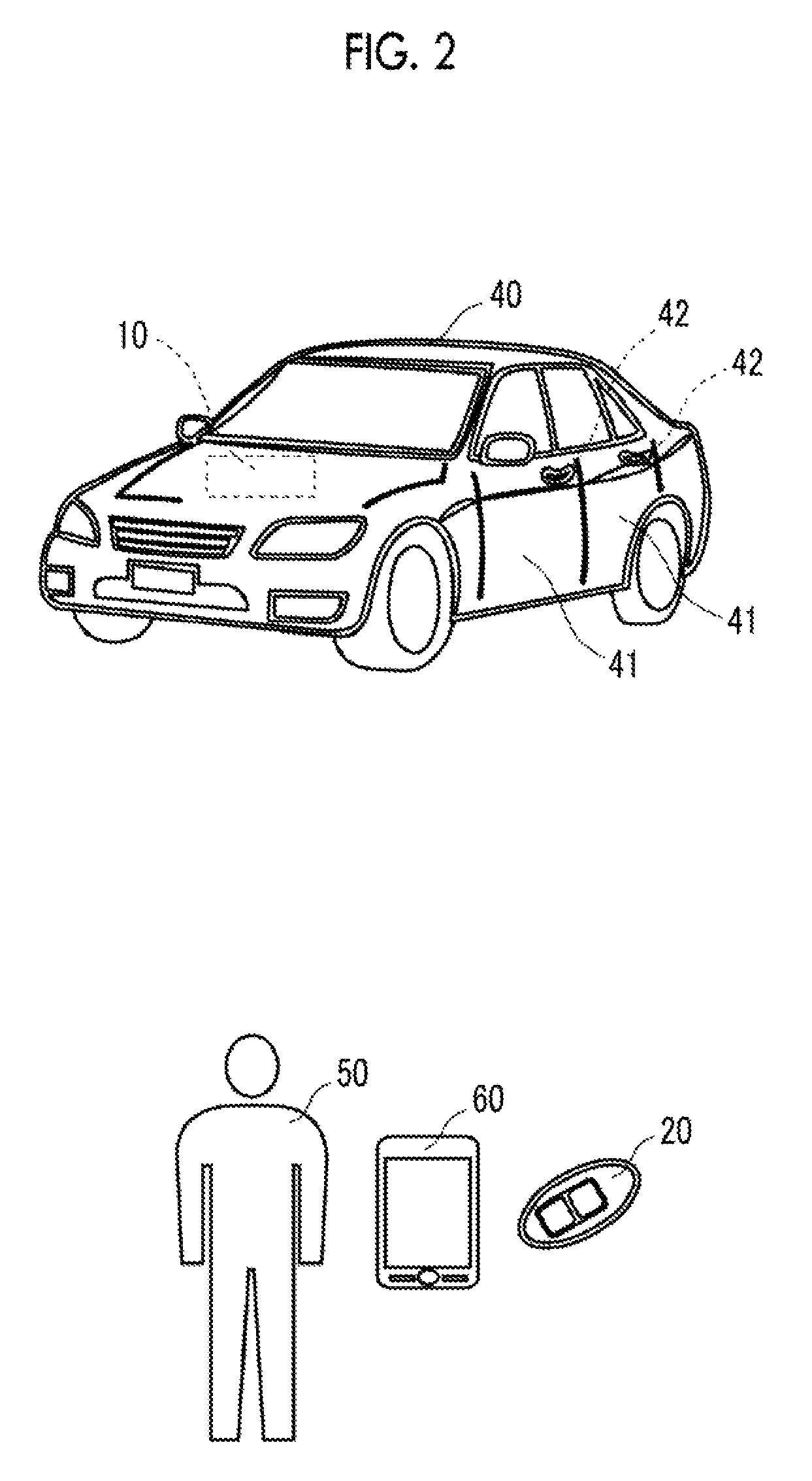Keyless entry system
a keyless entry and keyless technology, applied in vehicle components, anti-theft devices, instruments, etc., can solve the problems of inability to reliably transfer the wakeup signal to the mobile device, the mobile device cannot normally receive the radio signal, and interfere with the reception of radio signals in the lf band, so as to increase the reliability of radio communication
- Summary
- Abstract
- Description
- Claims
- Application Information
AI Technical Summary
Benefits of technology
Problems solved by technology
Method used
Image
Examples
Embodiment Construction
[0031]Hereinafter, an embodiment of the invention will be described referring to the drawings. In the respective drawings, description will be provided while an X1 direction is referred to as a left direction, an X2 direction is referred to as a right direction, a Y1 direction is referred to as a forward direction, a Y2 direction is referred to as a backward direction, a Z1 direction is referred to as an upward direction, and a Z2 direction is referred to as a downward direction.
[0032]First, the configuration of a keyless entry system 1 according to the embodiment of the invention will be described referring to FIGS. 1 to 3A and 3B. FIG. 1 is a block diagram showing the configuration of the keyless entry system 1 according to the embodiment of the invention. FIG. 2 is an explanatory view showing a use example of the keyless entry system 1 shown in FIG. 1. FIGS. 3A and 3B are explanatory views showing the configuration of a mobile device 20 shown in FIG. 1. FIG. 3A is a top view and ...
PUM
 Login to View More
Login to View More Abstract
Description
Claims
Application Information
 Login to View More
Login to View More - R&D
- Intellectual Property
- Life Sciences
- Materials
- Tech Scout
- Unparalleled Data Quality
- Higher Quality Content
- 60% Fewer Hallucinations
Browse by: Latest US Patents, China's latest patents, Technical Efficacy Thesaurus, Application Domain, Technology Topic, Popular Technical Reports.
© 2025 PatSnap. All rights reserved.Legal|Privacy policy|Modern Slavery Act Transparency Statement|Sitemap|About US| Contact US: help@patsnap.com



